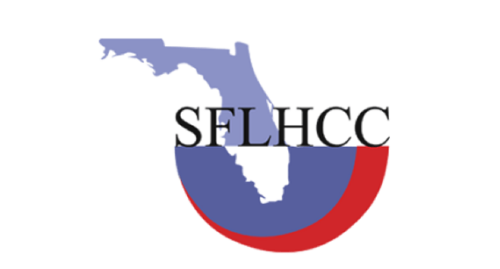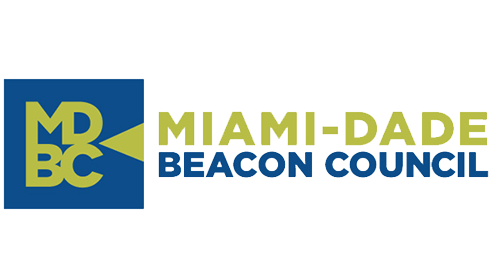
In a changing world, companies have an essential role as agents of change and, therefore, they must look at themselves introspectively, analyze their impact, and determine their purpose and values, but also their risks, to be sustainable.
This is precisely what the Financial Market Commission (CMF) seeks through General Rule (NGC) No. 461, enacted on November 12, 2021, which incorporates sustainability and corporate governance issues in the Annual Report of supervised companies, and will enter into force gradually, starting at the end of 2022 for some entities.
In line with international standards, the objective is that the entities audited and supervised by the CMF report the policies, practices, and goals adopted in environmental, social and governance (ESG) matters.
It should be noted that NCG No. 461 modifies NCG No. 30 regarding the content and structure of the Annual Report, by adding these integrated sustainability issues and those related to corporate governance, which was previously contained in NCG No. 385, which is repealed by the new regulation.
WHAT DOES STANDARD N°461 INCLUDE?
The new Annual Report is structured based on an integrated reporting approach, which includes information requirements on:
1- Profile of the entity: indicate its mission, vision, and purpose, as well as its corporate values and principles. In addition, it must incorporate historical information, and mention whether or not the company has a controller.
2- Corporate governance: disclose the structure and operation of the entity’s corporate governance, referring to the adoption of best practices, if applicable, at least concerning:
- How it seeks to ensure and evaluates the proper functioning of its corporate governance.
- How it integrates a sustainability approach in its business.
- How they detect and manage conflicts of interest, conduct that could affect free and fair competition, and how corruption, money laundering, and financing of terrorism are prevented.
- How they take care of and address the interests of their main stakeholders.
- How they promote and facilitate innovation, and whether they allocate corporate resources to Research and Development.
- How they detect and reduce organizational, social, or cultural barriers that may be inhibiting the diversity of capabilities.
- How do they identify the diversity of skills, knowledge, conditions, experiences, and visions that all those who perform functions at different levels of the organization should have, and what are the hiring policies preserving that diversity.
Regarding the Boards of Directors, the standard requires entities to report various matters such as: identifying their members; dates of appointment or last re-election, their termination in office; profession or trade; income as members of the Board; identify the origin of those amounts; describe the frequency with which they report matters related to environmental and social issues; the frequency with which they meet with the risk management, internal audit and social responsibility units, and with the external audit firm; disclose the policy for hiring experts or for induction of new members; whether they regularly evaluate their collective and/or individual performance; among other matters.
About the risk management system, describe how the entity integrates risk management and internal control framework into its activities.
Specifically, it should mention the guidelines established by the Board of Directors on risk management policies, especially operational, financial, labor, environmental, social, and human rights risks; as well as risks and opportunities that could affect its business and financial condition, or risks and opportunities inherent to the company’s activities that could affect it through its subsidiaries, associates, suppliers, or the market in general, including environmental, social and human rights risks, information security, risks related to free competition, health, and safety of consumers, etc. In addition, it must specify whether it has a risk management unit, a Code of Ethics or Conduct, information dissemination programs, and ongoing training for personnel regarding the policies, procedures, controls, and codes implemented for risk management; whether it has a channel for reporting any irregularities or illegal acts, or whether it has an implemented crime prevention model as established in Law No. 20.393, among other points.
3- Strategy and business model: describe the company’s strategic objectives, especially on environmental, social, and human rights issues, and it’s planning to achieve these objectives. Additionally, the strategic commitments adopted in the framework of compliance with the Sustainable Development Goals (SDGs) of the United Nations or equivalent should be indicated.
4- People: indicators and policies related to the entity’s personnel, including, among other aspects, diversity, gender pay gap, job security, labor, and sexual harassment, training, and benefits.
5- Business model: Specify the industrial or economic sectors in which activities are carried out; describe the businesses and stakeholders that are relevant to the entity and their relevance; whether the entity belongs, is affiliated or participates in guilds, associations, or organizations; provide information regarding the main properties for the performance of its activities.
6- Supplier management: include policies and indicators for payment and evaluation of suppliers.
7- Regulatory compliance indicators: in matters related to clients, workers, environment, free competition, and others.
8- Sustainability indicators: according to the type of industry that corresponds to the entity, following international standards. In this regard, the sustainability metrics that are material for the entity by its industry sector should be reported.
9- Relevant or essential facts: a summary of the essential or relevant facts disclosed by the entity during the annual period shall be included, indicating the effects they have had or may have on the entity’s performance, on its securities, or the offer of them. They should also report the essential or relevant facts that, although having occurred before the period covered by the Annual Report, have had during the fiscal year an important influence or any effect on the business, financial statements, securities, or the offer of them, or may have in future fiscal years.
10- Shareholders’ and Directors’ Committee comments: a faithful summary of the comments and proposals made by shareholders and the Directors’ Committee regarding the progress of the company’s business shall be included.
11- Financial reports: it shall be indicated that the entity’s financial statements are available on the Financial Market Commission’s website and the entity’s website, if any, indicating the URLs of both sites.
Learn the details of the Financial Market Commission’s guidance
WHEN WILL NCG N°461 ENTER INTO FORCE?
The audited entities must include in their annual report the indicators described above according to the following schedule:
- As of December 31, 2022: open stock corporations exceeding the equivalent of 20 million UF in total consolidated assets calculated as of the beginning date of the year referred to in the report.
- As of December 31, 2023: publicly traded corporations exceeding the equivalent of UF 1 million in total consolidated assets calculated as of the beginning of the year referred to in the notes to the financial statements.
- As of December 31, 2024: special corporations such as Banks, Financial Infrastructure Entities, Insurance Companies, and General Fund Administrators.
As long as the new structure of the Annual Report is not in force for the particular entity, they must continue to comply with the provisions in force before the enactment of this regulation.
MEASURING G OF ESG WITH G-METRIX
In this context, the initial governance diagnosis plays a fundamental role in establishing the gaps and generating the necessary action plans to solve them.
Through G-Metrix you will be able to measure each of the guidelines established by the World Economic Forum as the basis for good corporate governance. Thus, companies will be able to collect and review the evidence of their corporate practices, making it visible whether they are being carried out or, on the contrary, are not being complied with.
How does G-Metrix work?
- You and your team answer a form.
- Attach the required evidence, which demonstrates the answers stated in the questionnaire.
- The BH Compliance team will review the form and the evidence collected, thus making a diagnosis.
In this way, you will be able to measure year by year the metrics to measure your progress in governance, establish the desired goals, and then plan and execute a medium and long-term plan to strengthen the corporate governance of the company.














